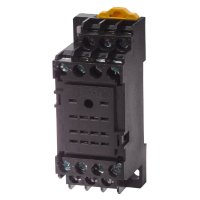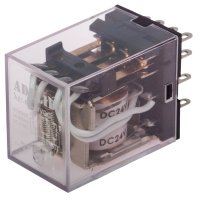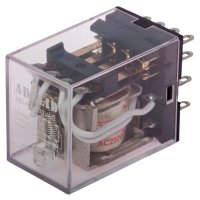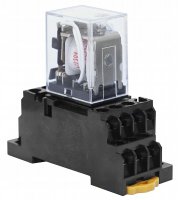How is a relay constructed?
Basically, a relay consists of a coil with an iron core. When current flows through the coil, it generates an electromagnetic field and attracts a ferromagnetic armature attached to the end of the coil. The attraction of the armature connects the two contact springs and closes the so-called normally open contact in the relay (normally open contact). So-called normally closed contacts open by design when a magnetic field is generated. This is referred to as a normally closed contact.
Advantages and disadvantages of use
Semiconductors or semiconductor circuits or transistors are now often used as a substitute for relays, but are still used in many areas for the following reasons: Despite rising raw material prices, relays are still very cheap. Electronic components can be easily integrated into circuits and have particularly good compatibility and stability during voltage and current peaks. Potential-free isolation from the load circuit is also one of the advantages of relays. In addition, relays normally heat up only slightly, so no cooling is required. They can be used to switch very small signals to high frequency power. The switching state is often visible only to the naked eye, which is also convenient. Relays are relatively insensitive to voltage and current spikes, but are particularly sensitive to vibration and shock. Another disadvantage is the audible noise when the relays are switched. Relay isolation capability also depends on altitude and prevailing air pressure for most models. With their high response and dropout times, relays are among the slowest switching mechanisms: relays have a response time of a few milliseconds, while semiconductors switch in microseconds or even nanoseconds, many times faster. Due to the mechanical and electrical structure, the basic mechanical and electrical wear of the relay circuit must always be considered and compared to the lifetime of the switching system.
How to connect relays safely
You don't have to be an expert to wire relays, but there are a few basic points to keep in mind: What type of relay should be connected? What is the polarity and voltage of the relay? What do the numbers on the relay mean? But let's start from the beginning. Basically, electromechanical relays always have two contact pins. They are soldered to the ends of enameled copper wire, which is used to make relay coils or solenoids, and wrapped around an iron core to form an electromagnet. In electromechanical relays, these two terminals form the input or control circuit. When voltage is applied to the terminals, the coil is energized and the electromagnet attracts the iron skin in which the moving contact is integrated. For "classic" electromechanical and solid state relays, it is important to note the polarity of the DC control circuit. Also important is the nominal voltage and the voltage range to which the coils of electromechanical relays or, in the case of solid-state relays, the control electronics refer. If too much voltage is applied, the actuator of the relay may burn out and the actuator will not switch properly. Some relays have a very wide operating range and allow high control voltages, e.g. 90 to 250 VAC. Polarity is usually indicated by the + and - symbols next to the coil and input circuit pins, respectively.





